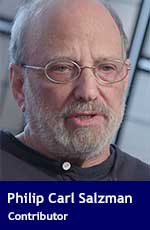 Two academic conferences have recently been criticized for not being sufficiently diverse.
Two academic conferences have recently been criticized for not being sufficiently diverse.
A conference to empower women and train them for leadership was cancelled by St. Catherine University in St. Paul, Minn., because, according to school officials, the lineup of speakers did “not reflect the diverse St. Kate’s community of today nor the world of tomorrow we are committed to creating.”
The problem was that the 20 speakers invited were all white women. They may have been diverse in their gender experience or their sexual preference, but that wasn’t deemed sufficient. No inquiry was indicated about diverse religious affiliations or national backgrounds. Whether the speakers’ views on the subject of the conference were diverse was apparently not a concern to the university.
However diverse their backgrounds, experience, orientations and views, they were still all white. So without women who were black, brown, yellow, red and blue, they were considered by the university to be insufficiently diverse.
As well, an Applied History conference at Stanford University was panned by tweets from various academics for being “too white” and “too male.”
In fact, according to the organizer, “four out of 19 individuals invited to present papers at the conference were women,” but only one was able to attend. But the organizer did defer to the god of diversity by saying “Everybody was keenly aware that it was too white and too male.”
No one is more devoted to diversity than Canadian Prime Minister Justin Trudeau, who repeatedly asserts that “Diversity is our strength.”
Not everyone agrees, of course. Others argue that diversity is a weakness, and assimilation and unity are strengths.
However, Canada’s government makes it clear that while it loves census-category diversity, it opposes diversity of opinion. Its distribution of summer job money is contingent on organizations committing to the government’s views on abortion and other controversial policies.
The government also strongly supported a motion condemning Islamophobia, an invented mental condition propagated by the Organization of Islamic Cooperation to silence criticism of Islam. The government is looking at specific legal measures to silence any criticism of Islam.
For the federal government, diversity of gender, race, religion, sexual preference and nationality is obligatory, but diversity of opinion is outlawed.
As a university professor, I’ve been remiss in not enforcing diversity in my classes. In my senior seminars on Immigration and Culture, I assigned three books, all by women. So was I at fault for not assigning at least one book by a man?
The three women, however, are quite diverse: an African, a Norwegian and a Canadian. But why did I not assign a book by an Asian or a Pacific islander?
The answer, of course, is that I picked what I thought were the three best books for the seminar. Should I have picked weaker and less informative books with male, Asian, Mediterranean, Pacific or First Nations authors, to ensure greater diversity? Or would that be an abdication of my responsibility as an academic and teacher?
Universities used to base their decisions on academic criteria, the intellectual quality of the work. This is no longer the case. Universities now base their decisions on gender, race, sexual preference, religion, disability and nationality, so as to guarantee diversity. They admit students and hire professors with weak academic credentials because of their skin colour, gender, religion, sexual preference, nationality, economic class or disability.
Is this not a betrayal of the academic mission of the university? Should academic goals be set aside in favour of social engineering? Are universities now becoming social reform agencies? How can serious academic work get done when recruitment is based not on academic achievement and capability, but on non-academic, demographic criteria?
What exactly is the idea behind this affirmative action, admitting some applicants with weak records? Is the idea that Indigenous people and blacks are not smart and hard working enough to compete with whites and Asians on an equal basis?
So the solution is having double standards: easy requirements for some designated groups and tough standards for whites, and even tougher ones for Asians? Is this not the racism of low expectations?
Our position should be the opposite: We think that blacks and Indigenous people are just as smart and just as capable as any other group, and we expect them to compete on an equal basis.
Universities argue that it’s reasonable to compromise on academic criteria and goals in order to advance inclusion and social justice. But here’s where we find the moral shortfall of diversity policies. Individuals with strong academic credentials are rejected in favour of those with weak academic credentials. Sports teams on these campuses don’t abide by this standard – they select the best candidates.
How can lowering academic standards be considered justice?
Perhaps in the history of humankind, every group has dominated others and every group has been dominated by others. Rather than trying to redo history by discrimination, we should treat each person according to his or her capability and merit.
Diversity in universities means setting aside academic criteria in favour of social engineering. The purpose is to advance census-category equality by favouring some people over others. Social justice for some, however, means political injustice for others.
Whatever happened to equal justice for all?
Philip Carl Salzman is professor of anthropology at McGill University, senior fellow at Frontier Centre for Public Policy, and Fellow of the Middle East Forum.
The views, opinions and positions expressed by columnists and contributors are the author’s alone. They do not inherently or expressly reflect the views, opinions and/or positions of our publication.

